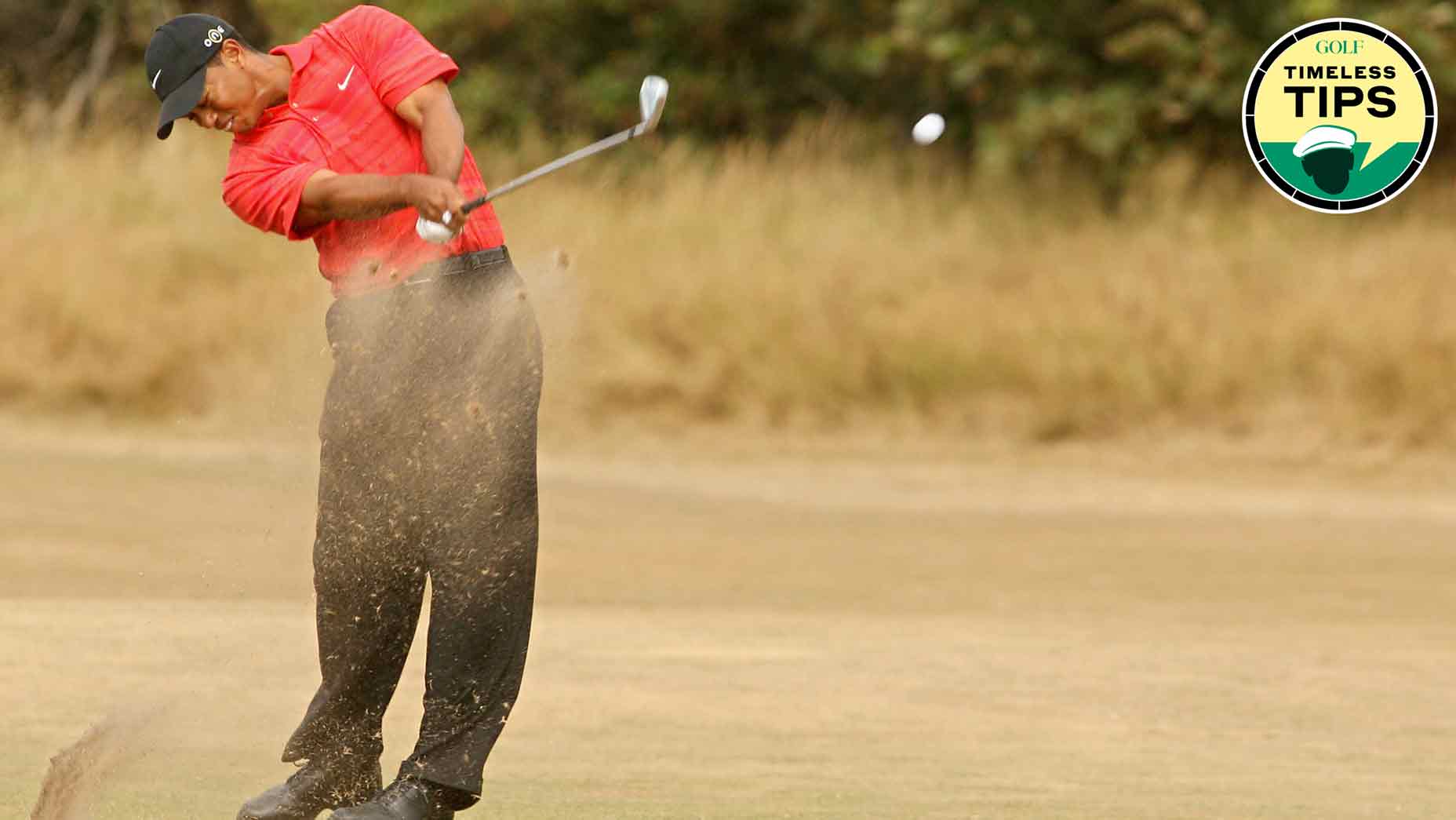Golf instruction is ever-evolving, but the best advice stands the test of time. In GOLF.com’s new series, Timeless Tips, we’re highlighting some of the greatest advice teachers and players have dispensed in the pages of GOLF Magazine. This week, we look back at a breakdown on Tiger Woods’ stinger from our January 2001 issue. For unlimited access to the full GOLF Magazine digital archive, join InsideGOLF today; you’ll enjoy $140 of value for only $39.99/year.
There are certain signature moves that become synonymous with the athletes who perfect them. Kareem Abdul-Jabbar’s sky hook. Michael Jordan’s fadeaway. David Beckham’s bending free kick. Serena Williams’ power serve. Muhammad Ali’s shuffle. All of the moves have been replicated by those to follow in the legends’ footsteps, but none have perfected them quite like the originators.
You can count Tiger Woods’ stinger in that camp.
Woods has just about every shot in his arsenal, but none is more synonymous with the Big Cat than his patented stinger. Woods has ridden the shot to major championship victories, and leaned on it through thick and thin. With a low, penetrating ball flight, the shot is as useful as it is beautiful. That iconic shot will return this week as Woods tees it up in a PGA Tour event for the first time since the Masters.
The excerpt below is from the January 2001 issue of GOLF Magazine where Hall of Fame Teacher Craig Harmon broke down how to hit Woods’ patented stinger.
How to hit Tiger’s stinger
You can wear Tiger’s clothes, play Tiger’s driver, and pump your fist when you make a crucial putt. But can you play like Tiger? Yes, you can, or at least you can learn to hit his low, penetrating tee shot, called the “stinger.”
Contrary to popular belief, Tiger did not invent the stinger. My dad, Claude Harmon Sr., taught the mechanics of the shot to many of his students, including my three brothers and me. I’m sure he never envisioned that someday a player would be using it to hit the ball 280 yards with a 2-iron, and I don’t think you can expect to get Tiger-like distance from this shot, either. But the good news is, with the right technique, just about anybody can hit it.
Why, you ask, would you even want to try? First of all, it comes in handy when windy conditions demand a low, controlled shot that hits the fairway and runs. Second, it can be hit with virtually any club off the tee — if you don’t carry a 2- or 3-iron, a fairway wood will achieve similar results. The concept behind the shot can also be used for punch approach shots to receptive greens, using any club down to a pitching wedge. Here’s how.
Address: Settle the ‘Y’
At address play the ball an inch or two farther back in your stance than normal, which will set your hands slightly forward. Choke down about an inch on the grip for added control. These adjustments should cause your arms and the shaft to form a “y.” Make a smooth, full backswing and try to retain this “y” as much as possible throughout the swing.
Impact: Bow the wrist
The stinger’s low trajectory and extra roll results from the bowed wrist position at impact. This means the left wrist is firm and curved toward the target. To feel this, my father had students hit a punch-slice with a long iron, asking them to “hit and stop.” The only way to stop so quickly after impact is to keep the wrists firm. At impact, my arms resemble the “y position from address. This prevents the wrists from flipping over or “releasing” after impact.
Finish: Rotate the torso
Once you achieve the bowed impact, the finish flows naturally, as the trunk and arms rotate the club around to the left. Instead of causing a slice, this allows for a low, running draw. The faster the body unwinds, the farther you can hit the ball. The finish should feel very different from a normal swing where the hands turn over. To “sting” it the wrists stay firm, and the left elbow folds down toward the ground.
